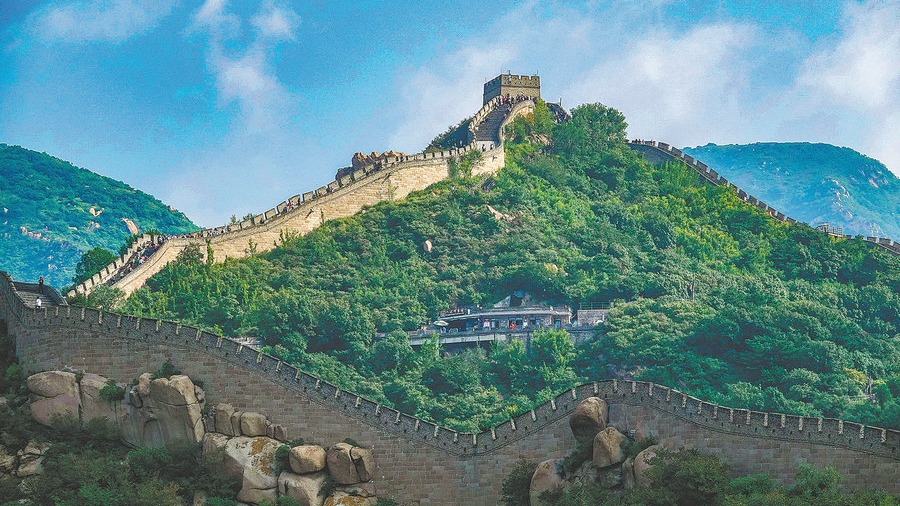Embarking on an enchanting expedition, visitors don virtual reality (VR) glasses that transport them to a vibrant military stronghold along the Ming Dynasty (1368-1644) Great Wall, showcasing lively scenes of bustling streets, military encampments, and rustic farmhouses.
In Gansu province in Northwest China, a group of technology specialists is leveraging digital innovations to reconstruct portions of the Great Wall dating back over four centuries, highlighting and unraveling the cultural significance of this UNESCO World Heritage Site.
The Great Wall, an emblem of China, consists of numerous interconnected walls, some with origins dating back 2,000 years. The extant segments stretch over 21,000 km in total length, with Gansu contributing nearly one-fifth to the overall expanse of this iconic edifice.
By employing ancient texts, on-site surveys, and digital advancements, the technical team from Silk Road Infoport Co Ltd has successfully revived three pivotal military fortresses along the Gansu stretch of the Great Wall, as confirmed by Wang Yuou, the manager of the company’s intelligent digital reconstruction initiative.
Cutting-edge technologies, including precise BeiDou satellite positioning and drones, were utilized during field research to faithfully restore historical remnants, as per Wang.
Beyond the Great Wall, the team has applied their digital prowess to revive the Nanzuo ruins, a significant archaeological site shedding light on early Chinese civilization.
The primary palace at the Nanzuo site, encompassing an indoor area of 630 square meters and dating back approximately 5,000 years, is recognized by the archaeological community as the largest single indoor structure of its era in China.
Experts have compiled, scrutinized, and digitized a wealth of information, such as documents, images, and videos related to the Nanzuo ruins. A multi-dimensional parameter information database aids in presenting a comprehensive view of the cultural heritage restoration.
“Digital technology enables us to construct models of the ancient palace and bring it to life,” expressed Wang.
In recent times, China has increasingly harnessed digital innovations to animate historical artifacts. By leveraging technologies like 5G, augmented reality, VR, and artificial intelligence, cultural institutions and tech giants such as Tencent and Baidu have introduced a myriad of digital cultural initiatives and products.
A team from Tianjin University utilized centimeter-resolution continuous imaging to uncover over 130 concealed doorways at the Great Wall. Additionally, about 900,000 cultural relics and artifacts at the Palace Museum have undergone digital preservation, constituting 48 percent of its total collections.
China’s endeavors to “revitalize” cultural treasures aim to narrate the tale of its illustrious civilization. The 14th Five-Year Plan (2021-2025) underscores the dedication to promoting unrestricted access and digital advancement of public cultural venues like museums.
Looking to the future, Wang’s team aims to capture the complete lifecycle of digital artifacts. “By integrating diverse information parameters such as historical context and spatial intricacies, alongside intelligent algorithmic support, we aspire to faithfully recreate the relics across different epochs,” he remarked.
